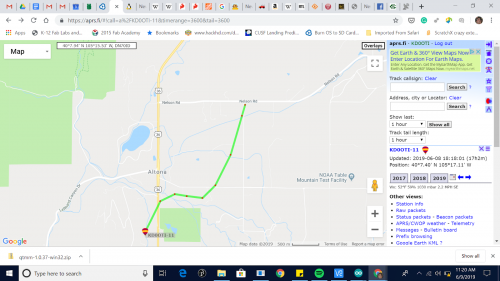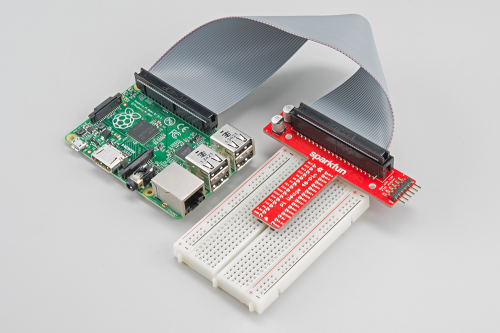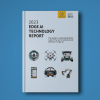×
SparkFun will be closed on Tuesday, December 24th, and Wednesday, December 25th, in observance of the Christmas holiday. Any orders qualifying for same day shipping placed after 2:00 p.m. (MST) on Monday, December 23rd, will be processed on Thursday, December 26th, when we return to regular business hours. Wishing you a safe and happy holiday from all of us at SparkFun!
Please note - we will not be available for Local Pick up orders from December 24th-December 27th. If you place an order for Local Pick-Up we will have those ready on Monday, December 30th.
What is APRS?
APRS (Automatic Packet Reporting System) is data over a frequency-modulated bandwidth of 144.390, and has been around for 25 years – it's an early form of the cell phone and internet network structure as we know it today. Much of the structure of APRS can be traced back to Bob Bruninga, who is still working on it. Thanks Bob!
APRS can be delivered through any number of platforms. The most commonly recognized among these is amateur radio on 144.390 Mhz in the US. This radio signal can originate from a hand held transmitter, an Arduino with a radio unit or even a cellphone. There are numerical appends on your callsign to designate what platform you may be operating from. In my most recent case we are flying weather balloons, so my callsign on the balloon is KD0OTI-11 (the -11 indicates a balloon). The append is fairly flexible and it also builds an icon as your reports populate aprs.fi.
The APRS system is a huge network of amateur radio repeaters and digital gateways that are maintained and supported by people like you and me all over the world.
We are all well acquainted with the power of our cell phones, but cell service is bounded by towers, reception and of course, monthly billing. APRS gives a tremendous range of communication with no monthly bill. This got my attention.
What can I do with it?
High-altitude balloons
One of the most common applications of APRS is to transmit location coordinates(GPS). There is a robust stack for formatting your coordinates and getting them out. The tracking on the aprs.fi website is very good and it will give you a fairly accurate prediction based on your current speed and direction. Your waypoints are stored and you can get great data and time stamps from the received packets.
Weather stations
There are a host of resources online to help you build an APRS weather station. Given that Weather Underground has gone behind a paywall, this is a pretty attractive alternative for getting and working with weather data. Also, due to the network of repeaters and the relatively long broadcast distance of two-meter radio, this is a fantastic choice for logging in remote areas.
This project is an ideal classroom exercise and can really get students excited about building their own data logging equipment. The Raspberry Pi is an extremely popular choice and it makes for an ideal use of the early model A and B Pis you may have laying around.
As an extension of this, Google supports an API on the service and it can lead to a huge array of computer science topics and app development projects. When paired with the HX-1, the world is at your doorstep.
Text messages
Because APRS is parsed on the server side, you can send a wide range of data and service formats. SMS or text messages can be sent from any APRS transmitter by replacing the recipient callsign with the domain server address for the recipient and their phone number. Once again, a simple Google search will give you a tremendous amount of options.
As with SMS, the formatting of APRS can be configured to send email as well as text. The gateway domain is formatted with the email address rather than the phone number and, voila, radio to email.
What APRS is not
APRS is a cousin to packet radio, the two share the same formatting AX.25 but the standard frequencies and the modes of application differ.
APRS is also relatively slow, running at 1200 baud, so video, audio and pictures would be better suited for another protocol.
73's
All of this cool stuff happens over the amateur radio (Ham) bands, so you will need a license and some radio gear. I recently bought an inexpensive set of radios to test things with online for about 30 dollars each, so the investment can be relatively painless. I think the time invested in digging into the Technician license is well worth it and there is no Morse Code requirement.
Let us know how you may be using APRS and happy trails.











https://hamexam.org/exam/15-Technician take a test exam! Use that site to learn the test, it is EZ
One of the best resources for getting your license is the ARRL website. "ARRL" stands for "Amateur Radio Relay League" -- they're the "national" ham radio club. Their website can help you find classes to prep for the license exam, books to study if you don't want to do a class, and find an exam session once you're ready.
Also, a good "source" for getting equipment inexpensively is a "hamfest" -- basically an Amateur Radio swap meet. Many hamfests have exam sessions, they always have people "tail gating" -- selling used equipment, and some attract commercial vendors. The ARRL website can help you find ones in your area.
I happened to think that I should also mention this: If you're at all interested in Amateur Radio, there's a "national (and Canadian) event" coming up June 22-23 called "Field Day". (Briefly, we set up radios, often in public places such as parks or National Forests, and see how many other Hams we can contact in a specified 24-hour period.) Most clubs that participate eagerly welcome visitors. To find one in your area, the ARRL website has an area specifically about field day that includes a "locator". It's about the only time in the year that I actually get on the air and talk to other Hams, though I've been licensed for about 28 years.
I was remiss in not linking ARRL. This is a really great organization and they do tremendous work in education and supporting communities in emergencies. Please find your local Ham Club and find out more about the work ARRL does!!
APRS is a lot of fun. I've been using it since the 90's. One thing to be aware of, this is a single low data rate channel shared among many users in your area. Whatever you do, please don't flood the network. There are plenty of online resources on how to properly configure your system, especially the path statement. There have been some pretty bad congestion events caused by someone's balloon project beaconing with a ridiculously wide path statement.
For example: http://community.balloonchallenge.org/t/aprs-seriously-bad-path/1344
It doesn't take a balloon though, excessively large path statements and too frequent beaconing can seriously choke the channel even from a handheld radio. But the network survives, people make mistakes and learn, and it's all fun.
Like most things, it pays to look and learn before jumping in with both feet. :)